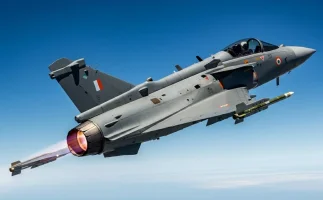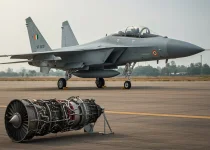- Views: 2K
- Replies: 17
The Indian Air Force (IAF) is facing a critical need to upgrade the firepower of its time-tested Mirage-2000 fighter jets to maintain combat relevance against the advanced aerial threats posed by China and Pakistan.
Experts and defence analysts suggest that equipping the fleet with the indigenous Astra Mk1 beyond-visual-range air-to-air missile (BVRAAM) is a crucial and immediate step to counter the superior missile capabilities of regional adversaries.
The IAF currently operates a fleet of approximately 45 upgraded Mirage-2000H/TH aircraft, which have been mainstays since their induction in the 1980s.
These fourth-generation fighters, renowned for their agility and proven performance in conflicts like the 1999 Kargil War and the 2019 Balakot airstrikes, are expected to serve until around 2040.
A comprehensive mid-life upgrade completed in 2015 equipped them with modern avionics, including advanced radar and electronic warfare suites.
However, the fleet's primary long-range weapon, the French-made MBDA MICA missile, is becoming increasingly obsolete. With a range of 60-80 kilometres, the MICA is significantly outmatched by missiles fielded by neighbouring air forces.
China's fifth-generation J-20 stealth fighters are armed with the PL-15 missile, which boasts an estimated range of over 200 km. Similarly, Pakistan's F-16 jets are equipped with the American AIM-120C-7 AMRAAM, which has an effective range of 100-120 km.
This disparity places the IAF's Mirage-2000 pilots at a considerable disadvantage in beyond-visual-range combat scenarios.
This capability gap is further highlighted by the IAF's current squadron strength, which stands at a concerning 31 against a sanctioned requirement of 42.
With delays in the induction of future aircraft like the Tejas Mk2 and the Advanced Medium Combat Aircraft (AMCA), optimising the potential of existing assets like the Mirage-2000 is a strategic imperative for national defence.
A viable and cost-effective solution lies in the integration of the Astra Mk1 missile.
Developed by India's DRDO, the Astra Mk1 is the country's first indigenous BVRAAM. With a proven range of 90-110 km and a speed of Mach 4.5, it offers a distinct performance improvement over the aging MICA missile.
The Astra has already been successfully integrated with the IAF's Su-30 MKI and Tejas Mk1 fleets, with numerous successful test firings confirming its reliability.
Integrating the Astra Mk1 with the Mirage-2000 is considered technically feasible. The aircraft's Thales RDY-2 radar, which has a detection range of up to 150 km, would only require software modifications to be compatible with the Indian missile.
This upgrade could be executed indigenously by HAL, which possesses the required infrastructure at its Mirage upgrade facility in Bengaluru. Such a move would strongly align with the government's 'Atmanirbhar Bharat' initiative, fostering the domestic defence ecosystem.
From a financial perspective, the Astra missile is significantly more economical.
Each Astra Mk1 unit costs approximately ₹2-3 crore, compared to the ₹6-8 crore for a MICA missile. This makes re-arming the entire Mirage fleet an affordable option, estimated at a fraction of the cost of acquiring new foreign missile systems.
However, the path to integration faces commercial hurdles.
Dassault Aviation, the French manufacturer of the Mirage, has reportedly shown reluctance to support the integration of a non-French missile. Instead, the company is promoting its next-generation MICA-NG missile.
For India, this option would mean continued foreign dependency and higher costs for a marginal performance gain over the readily available Astra Mk1.
Given the evolving security landscape, where adversaries are rapidly modernising their air forces, enhancing the Mirage-2000's long-range strike capability is not just an option, but a necessity.
The Astra Mk1 provides a potent, locally-produced, and financially sensible solution to ensure this vital component of India's air defence remains a formidable deterrent for the next decade.



